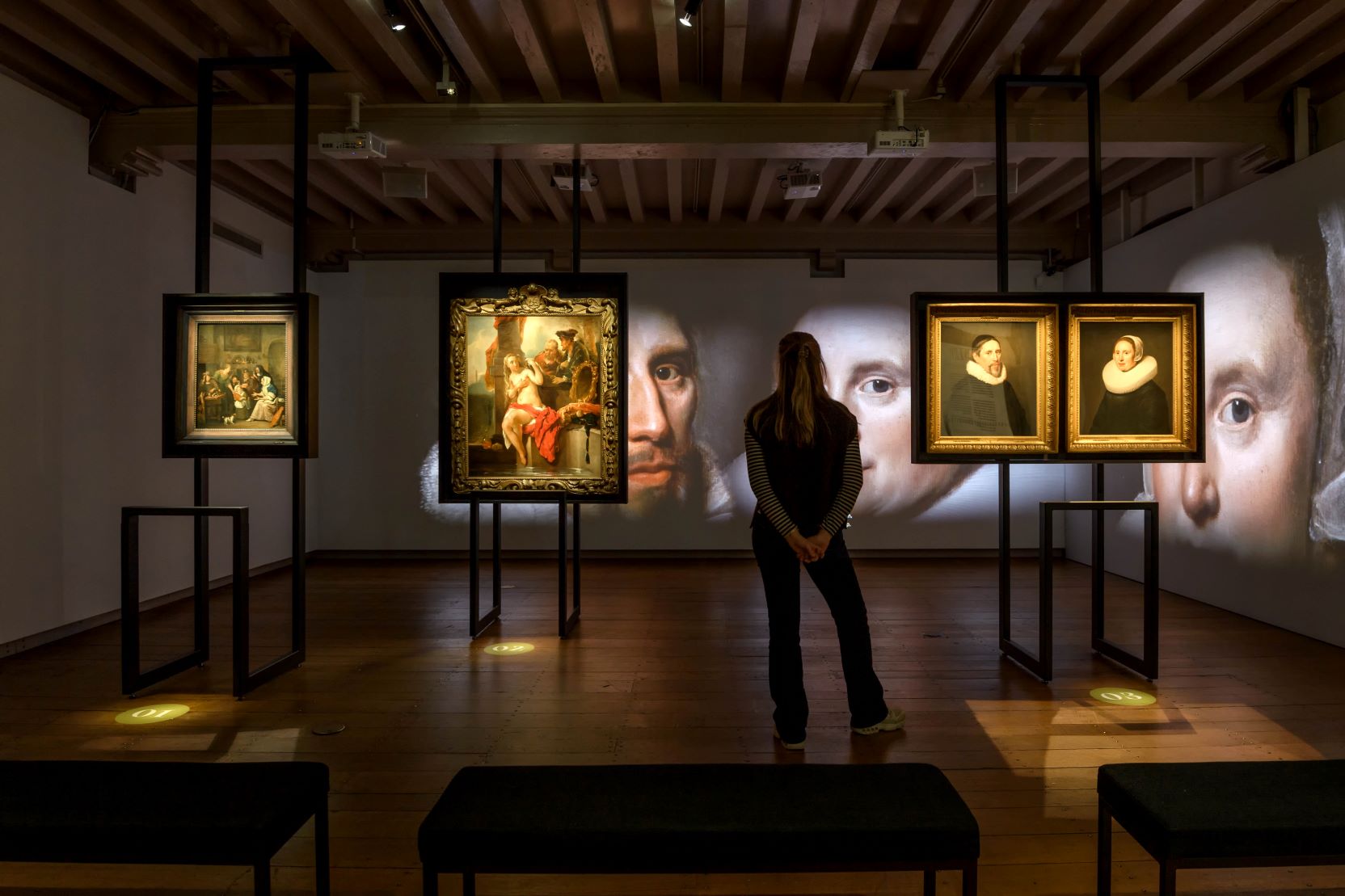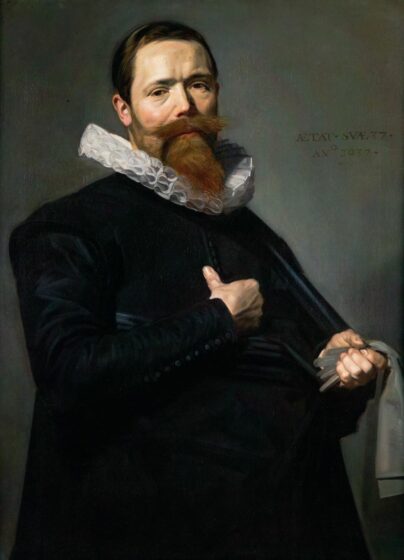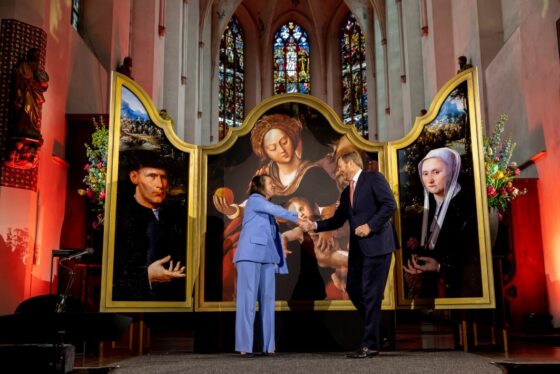Dutch golden era of painting? Made in Belgium, says a new show
Senay Boztas
Rembrandt, Vermeer, Frans Hals: these are the most famous of the classic Dutch painters in the 17th century when the nation’s art was flourishing. But a new exhibition at the Museum Catharijne Convent in Utrecht reveals that some of The Netherlands’ greatest painters actually owe more than many people realise…to Belgium.
“Ode to Antwerp: the secret of the Dutch masters”, which runs from 14 May to 17 September 2023 at this museum of medieval art, explains how much the Amsterdam painters owed the artists of Antwerp from a century earlier. Their characteristic style, their development away from religious or mythological scenes to real faces and real life, even their palettes were grounded in the work of painters from Antwerp, according to the exhibition. And in fact Hals may be thought of as Dutch but he was actually born in the Flemish centre of commerce and often signed himself “Frans Hals van Antwerpen”.
At a special opening for Belgian press – and Dutch News – the people behind the exhibition explained why classic 17th century Dutch painters owe so much to Antwerp and how the shift happened.
Dr Micha Leeflang, curator of the exhibition, was planning a show on Dutch public painting from the 16th and 17th century for a decade but the more research the team did, the more they realised that it was grounded in Antwerp. In the 16th century, Brussels might have been the capital of Flanders, which included the modern-day Netherlands, but Antwerp was its trade metropolis: wool, spices and diamonds were traded at its massive, inland port, a rich middle class became keen buyers of art and painters flourished.
The reason this wealth of talent travelled to Amsterdam was political: the region was fighting the Catholic Spanish government and their battles culminated in the Fall of Antwerp in 1585. Protestants were given four years to leave or convert, Antwerp’s population halved and its rich burgers fled to the Protestant north and Amsterdam – including most of its painters.
“The tipping point was the fall of Antwerp – everything changed,” says Leeflang. “People had the choice of leaving or converting to Catholicism. Almost everyone left for the north, and you see them buried in the Oude Kerk in Amsterdam. Without Antwerp in the 16th century, the art of the Dutch 17th century would not have existed.”

With the help of loans from the The Phoebus Foundation in Antwerp, the exhibition tracks this turning point in history. It includes pieces from well-known “Dutch” painters such as Jan Steen, Rembrandt and Frans Hals, whose parents fled at the Fall of Antwerp to Haarlem when he was six. They are compared with their Belgian predecessors, painters like Joachim Patinir, who developed landscapes, Pieter Aertsen, Joachim Beuckelaer and Peter Paul Rubens. These artists, it suggests, laid the groundwork of the genre pieces, portraits, still lives and church interiors that would become everyday subjects for Dutch 17th century painters.
“We go back in time to Antwerp – which took over after Bruges was in crisis,” says Leeflang. “Painting schools started, rich burgers could buy art, and Joachim Patinir, an Antwerp painter, really laid the ground for the landscape with his panoramic landscapes…that lead to the landscapes of Jacob van Ruisdael, with the typical Dutch cloudy skies.”
While Amsterdam was a mere small town in 1585, with 30,000 inhabitants, just 20 painters and no art market, what is now Belgium was forging ahead. “Pieter Aertsen is a painter who was very important for developments both in Antwerp and Amsterdam,” explains Leeflang. “He was born in Amsterdam and in 1570 at the age of 18, went to the most important city of the moment, Antwerp, because that was the place to be to get a commission. He married the Kathelijne Beuckelaer from Antwerp and had three sons who became painters, seen as typical Antwerp painters. He worked there for 50 years and then went back to Amsterdam, taking back his style and hugely influencing the development of the Amsterdam school.”
With 80 works, the exhibition compares and contrasts the style linked with the time of the flowering of Dutch art – no longer referred to as the “Golden Age” due to its associations with slavery – and the painters from Antwerp that preceded and even created this boom.
Marieke Van Schijndel, general director of Museum Catharijneconvent, said that the exhibition shows the cross-cultural currents between what are now two countries. “We have made a beautiful exhibition on the importance of collaboration between Antwerp and the Netherlands and how the exchanges that we have had for many centuries have led to the most beautiful art,” she says.

Visiting Belgians put things more bluntly. Katharina van Cauteren, chief of staff at The Phoebus Foundation in Antwerp – a foundation holding the private collection of Fernand Huts, Karine van den Heuvel and the Katoen Natie company – believes it is time to put the Antwerp influence firmly on the map. “Everything that would later make the golden age of Holland has its roots in Flanders of the 16th century,” she says. “We see this as a form of soft diplomacy, a way to facilitate collaboration between museums, regions and countries.”
Fernand Huts, a Belgian art collector and owner of Katoen Natie, attended the exhibition opening last week with king Willem-Alexander and says he is always happy to fill people in on the history.
“Antwerp, quite apart from painting and art, gave everything: craftsmanship, networks, our relations in the world, our religion, entrepreneurship,” he says. “It was a brain drain. Due to the fact that we Antwerpenaren, Brabantians and Flemish came here and integrated with the culture and people, the Netherlander came to be. We as Antwerpers are proud that we discovered or even created the Dutch identity, and that this is confirmed by this beautiful exhibition.”
He added: “When I said this to the king, he said that was a very interesting point of view!”
Ode to Antwerp: the secret of the Dutch masters, runs from 14 May – 17 September 2023 at Museum Catharijne Convent in Utrecht
Thank you for donating to DutchNews.nl.
We could not provide the Dutch News service, and keep it free of charge, without the generous support of our readers. Your donations allow us to report on issues you tell us matter, and provide you with a summary of the most important Dutch news each day.
Make a donation